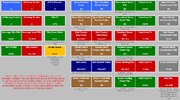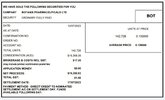- Joined
- 13 February 2006
- Posts
- 5,060
- Reactions
- 11,464
@Skate,
Ok, now you are giving me cognitive dissonance!


The same issues magnified, will exist when in drawdown. Until the trader is taken out of the process entirely, ie. the mechanical system is given to a third party merely to execute the signals (or some AI bot) then the system remains 'discretionary'.
For those of you who remember Zip-Zap back in the day from ReefCap, he had a mechanical system that you could employ (put money into) and an independent 3'rd party executed.
Never underestimate the ability of a trader to f*** up a good system.
jog on
duc
Ok, now you are giving me cognitive dissonance!


The same issues magnified, will exist when in drawdown. Until the trader is taken out of the process entirely, ie. the mechanical system is given to a third party merely to execute the signals (or some AI bot) then the system remains 'discretionary'.
For those of you who remember Zip-Zap back in the day from ReefCap, he had a mechanical system that you could employ (put money into) and an independent 3'rd party executed.
Never underestimate the ability of a trader to f*** up a good system.
jog on
duc










